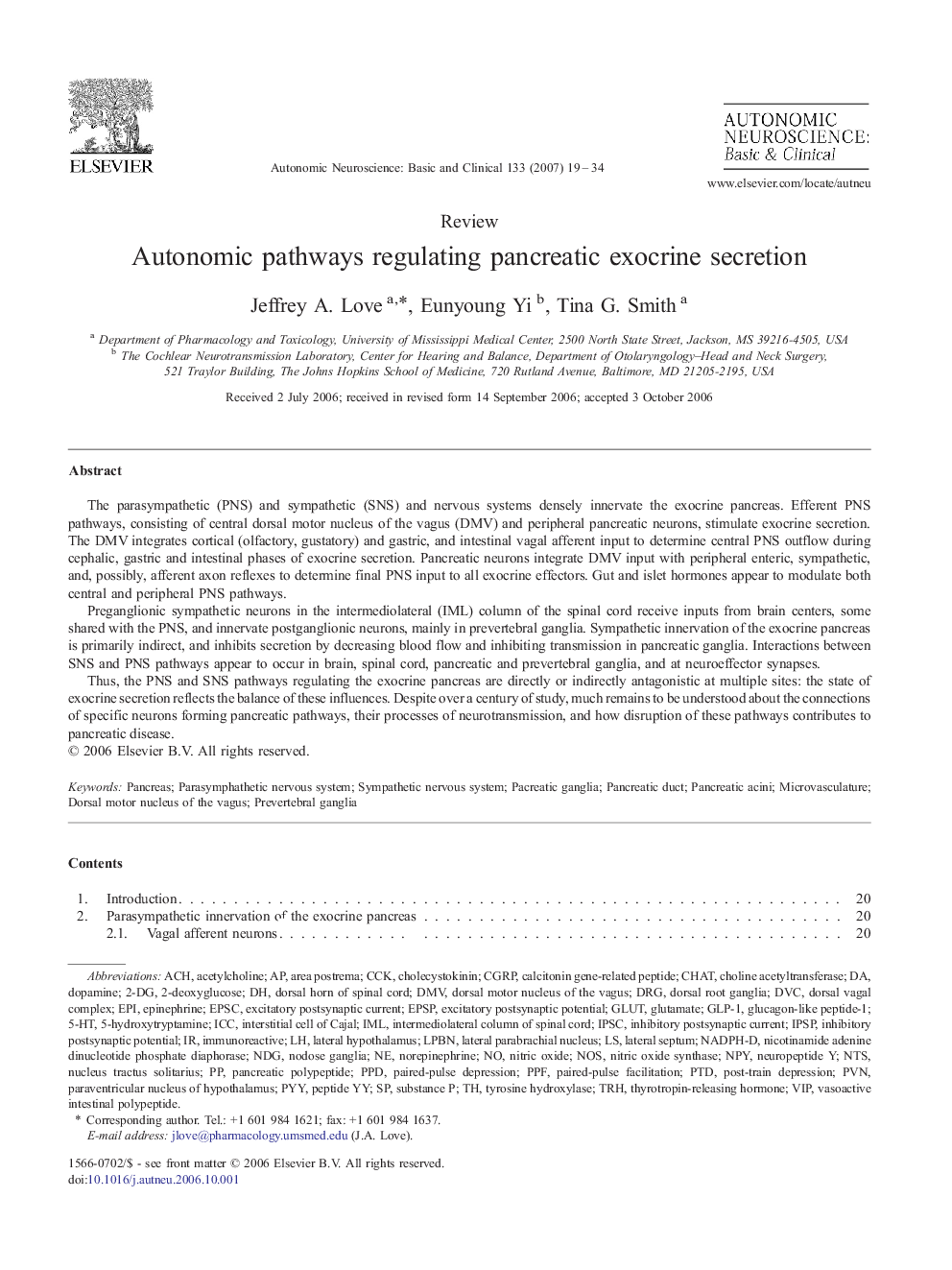| Article ID | Journal | Published Year | Pages | File Type |
|---|---|---|---|---|
| 3035575 | Autonomic Neuroscience | 2007 | 16 Pages |
The parasympathetic (PNS) and sympathetic (SNS) and nervous systems densely innervate the exocrine pancreas. Efferent PNS pathways, consisting of central dorsal motor nucleus of the vagus (DMV) and peripheral pancreatic neurons, stimulate exocrine secretion. The DMV integrates cortical (olfactory, gustatory) and gastric, and intestinal vagal afferent input to determine central PNS outflow during cephalic, gastric and intestinal phases of exocrine secretion. Pancreatic neurons integrate DMV input with peripheral enteric, sympathetic, and, possibly, afferent axon reflexes to determine final PNS input to all exocrine effectors. Gut and islet hormones appear to modulate both central and peripheral PNS pathways.Preganglionic sympathetic neurons in the intermediolateral (IML) column of the spinal cord receive inputs from brain centers, some shared with the PNS, and innervate postganglionic neurons, mainly in prevertebral ganglia. Sympathetic innervation of the exocrine pancreas is primarily indirect, and inhibits secretion by decreasing blood flow and inhibiting transmission in pancreatic ganglia. Interactions between SNS and PNS pathways appear to occur in brain, spinal cord, pancreatic and prevertebral ganglia, and at neuroeffector synapses.Thus, the PNS and SNS pathways regulating the exocrine pancreas are directly or indirectly antagonistic at multiple sites: the state of exocrine secretion reflects the balance of these influences. Despite over a century of study, much remains to be understood about the connections of specific neurons forming pancreatic pathways, their processes of neurotransmission, and how disruption of these pathways contributes to pancreatic disease.
